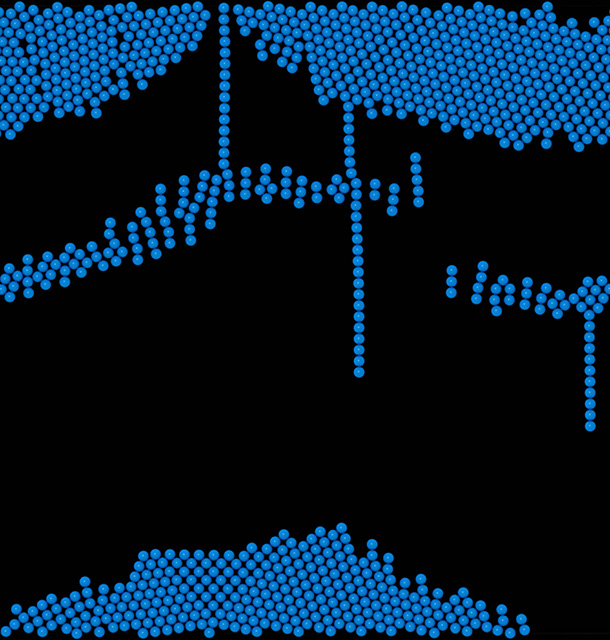They’re forming a band: Model predicts particle interactions
Lauren Smith
Sep 27, 2024

Source: Aditya Khair
When micron-sized particles, only visible with a microscope, are dispersed in a viscous fluid like oil or honey, they change how the fluid flows. Being able to control this change is useful in material processing.
Because the particles generally have different electric or magnetic properties compared to the fluid, applying a stimulus like an electric or magnetic field can make the particles arrange into ordered structures. Experiments have shown that, as the particles interact with each other, they align in the direction of the field into a long string of particles, called a chain.
As scientists have looked at a wider variety of material systems in recent decades, they discovered that under certain conditions, particle suspensions form zigzag bands instead of field-aligned chains.
Research from Aditya Khair and Jeremy Kach suggests that band formation can occur in a far wider range of soft matter systems than previously known.
This microscopic structural difference matters in material processing. A fluid with zigzag bands will flow much more easily than a fluid with chains. When the chains occur in a direction that's perpendicular to the direction of flow, they must be tipped over for the fluid to flow. A processing plant trying to flow the particle-laden fluid down a pipe, for example, would need a bigger pump to overcome the resistance.
Khair, a professor of chemical engineering at Carnegie Mellon, and Kach, a Ph.D. student, derived a mathematical model to predict whether particle suspensions will form chains or bands. In collaboration with Lynn Walker, now at the University of Minnesota, they mathematically calculated how two particles in a fluid would interact when an external stimulus is applied. They then progressed to dynamic simulations of 1,000 particles, to see how particle interactions changed at the scale relevant to chain or band formation.
Their work, published in the Journal of Rheology as the cover article for its July issue, illuminates the necessary characteristics of particle pair interactions that result in band formation.
"If you tell me how many particles are in a suspension, meaning the volume fraction of particles to fluid, and if you tell me something about how the particles arrange under a field, our model can predict if they will form chains or bands," says Khair.
Previously proposed mechanisms for the formation of chains or bands often involved detailed and system-specific calculations. By identifying the common theme in the interaction between the particles, Khair, Walker, and Kach created a model that is not system-specific.
Chains and bands have been observed in materially disparate systems, ranging from colloidal particles in electrolyte solutions, to paramagnetic particles under electric fields, to E. coli bacteria. "We thought there must be some commonality between these systems, and we created a mathematical framework to describe it," says Khair.
Understanding band formation in particle suspensions makes it possible to control structure formation and, consequently, to control how suspensions flow and behave in response to applied forces.
The new model will be useful for material processing industries. It also has potential applications in the design of reconfigurable dynamic materials. "Imagine that you can order particles into a structure on the application of a stimulus. With that structure, you could endow the material with some properties that might be useful, like optical properties or properties that determine how it flows," says Khair.
To derive their model, Khair, Walker, and Kach used monodispersed particles, which have identical size and material properties. Khair is now studying what structures look like when there are more complicated mixtures of particles. This line of research will make the model more applicable in real-world settings, where some polydispersity in particle properties is inevitable. Khair is also investigating what structures form when time-varying fields, instead of constant external fields, are applied.
For media inquiries, please contact Lauren Smith at lsmith2@andrew.cmu.edu.
